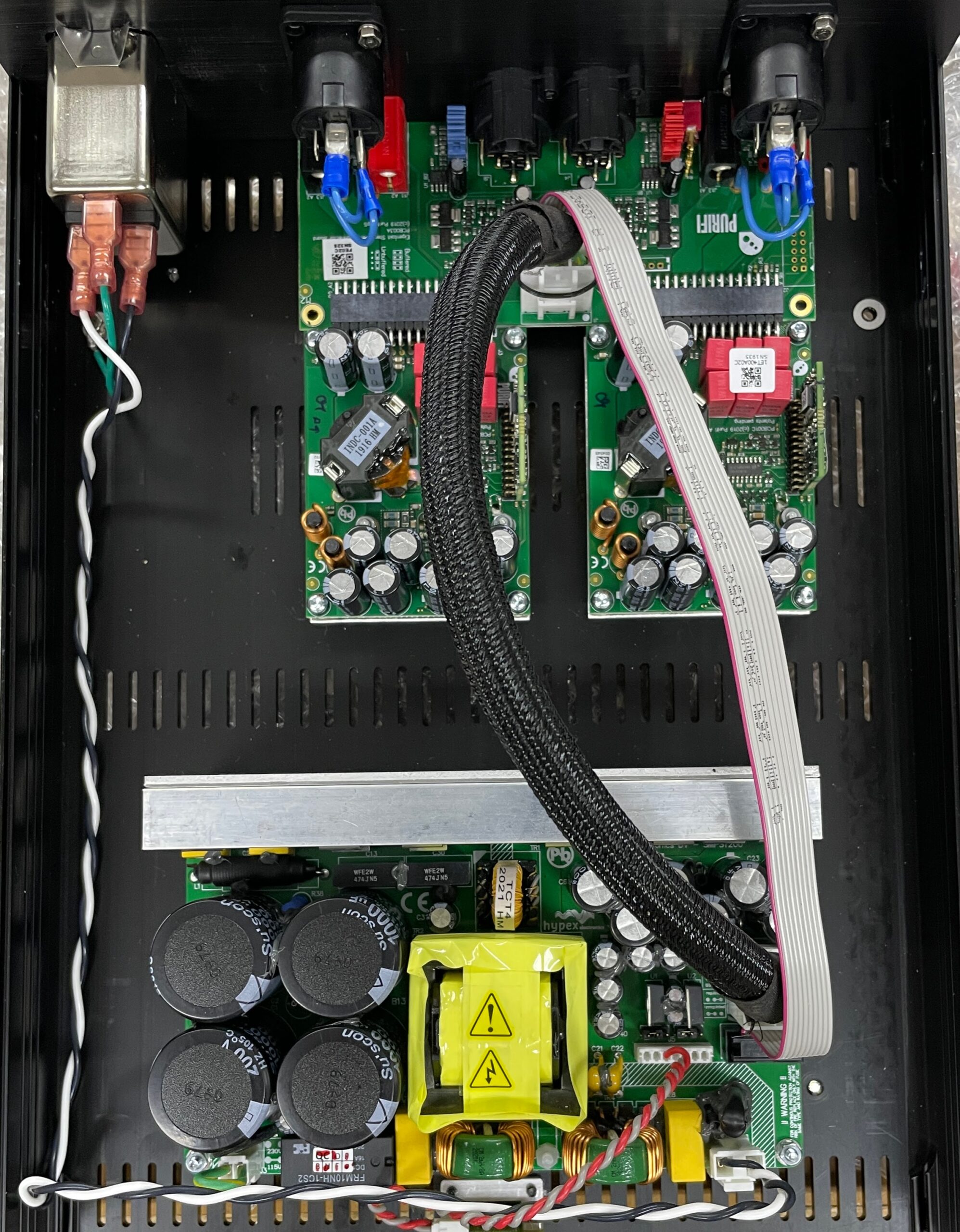@tomchr
I am confused by some entries in the 'NC500 OEM evaluation board' datasheet.
I see that VSIG+/- inputs (J12.1/2, Faston) are electrically connected to J3.25/26 outputs to the NC500 amp module interface.
Does this mean the amp module analog/modulator circuitry is directly working on the unregulated VAUX from the SMPS, instead of the regulated version from the buffer board?
If true, this doesn't seem ideal.
It also seems to be different from older version of the NC500 EVAL buffer datasheet which showed that the regulators on the buffer board fed regulated VSIG to the amp module over J3.25, J3.26.
Does this make sense to you? Please share your thoughts.
I see that your buffer will pass the onboard regulated voltage (when installed) to the amp module as does the EVAL1, EVAL2 purifi boards.
I am confused by some entries in the 'NC500 OEM evaluation board' datasheet.
I see that VSIG+/- inputs (J12.1/2, Faston) are electrically connected to J3.25/26 outputs to the NC500 amp module interface.
Does this mean the amp module analog/modulator circuitry is directly working on the unregulated VAUX from the SMPS, instead of the regulated version from the buffer board?
If true, this doesn't seem ideal.
It also seems to be different from older version of the NC500 EVAL buffer datasheet which showed that the regulators on the buffer board fed regulated VSIG to the amp module over J3.25, J3.26.
Does this make sense to you? Please share your thoughts.
I see that your buffer will pass the onboard regulated voltage (when installed) to the amp module as does the EVAL1, EVAL2 purifi boards.

